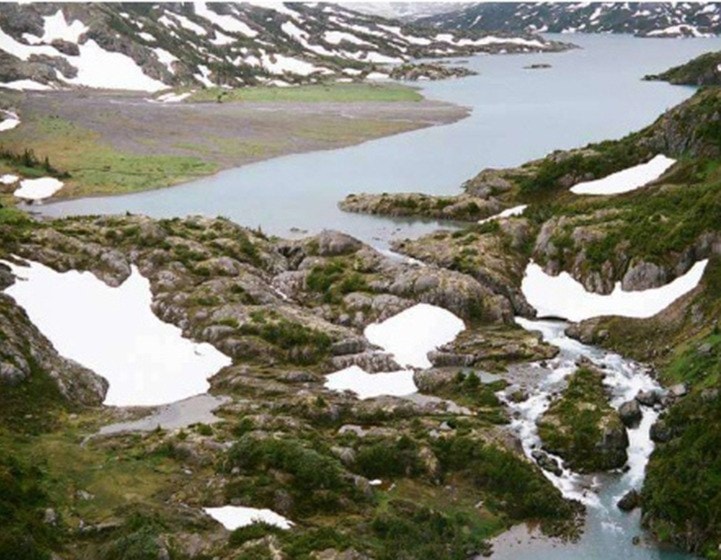THE NISGA’A Lisims Government has added a planned hydro-electric project to its growing list of projects from which it will earn revenues for itself and jobs for its citizens.
Planned is a 50 megawatt-rated project to be built by WindRiver Power Corporation which will use glacier-fed Kinskuch Lake north of the Nass Valley as a reservoir.
Property around the lake owned by Nisga’a Nation will add to the size of the reservoir and a 60-kilometre line will connect to the provincial grid via BC Hydro’s Northwest Transmission line at a substation in New Aiyansh in the Nass Valley.
In return for using the Nisga’a land at the lake and access through Nisga’a lands connecting to the substation, WindRiver will make payments during construction, royalty payments based on output afterward and support employment for Nisga’a citizens.
The Nisga’a Lisims Government will also have the opportunity to take on an equity position in the project and it has agreed to support WindRiver as the project moves through various environmental and other regulatory requirements.
Nisga’a Lisims president Mitchell Stevens called the planned project another in a line of ones to provide an economic base for the Nisga’a.
“The key piece is the fee simple lands [around the lake]. They were selected strategically through the [2000 Nisga’a] Final Agreement,” he said.
The Nisga’a also negotiated provisions for power projects tie-ins to BC Hydro’s Northwest Transmission Line, Stevens added.
Environmental work at Kinskuch has found no fish in the lake because of its location high in the alpine and that makes the project environmentally appealing, he said.
“One of the next steps is to work on an energy purchase agreement with BC Hydro,” Stevens continued, adding that the agreement needs to be long enough to recoup the capital investment and make a profit.
The Nisga’a and WindRiver began to talk about the project after a water licence for the lake held by another company lapsed.
“WindRiver has been very, very accommodating,” said Stevens of provisions within the 2000 Nisga’a Final Agreement, which gives the Nisga’a say in industrial and other activity within its own lands and surrounding territory.
WindRiver president Kipp Horton called the Nisga’a agreement a key first step.
“This project has the ability to deliver clean, reliable electricity,” said Horton.
Unlike wind-generated power which varies depending on the winds, reservoir-based hydro-electric projects can provide a consistent source of power, he said.
“Plants like these can last for a very, very long time, 80 to 100 years,” Horton added.
Next up for WindRiver is negotiating a purchase agreement with BC Hydro, more studies and acquiring the necessary environmental and other approvals. A capital cost has yet to be determined, said Horton.
Last year another small hydro-electric project of 31 megawatts at Long Lake near Stewart went into service at a cost of $100 million.
On that project the provincial government is providing the Nisga’a with up to $123,820 a year from revenues it is collecting, because it is located within the area over which the Nisga’a have an influence through its 2000 final agreement.
